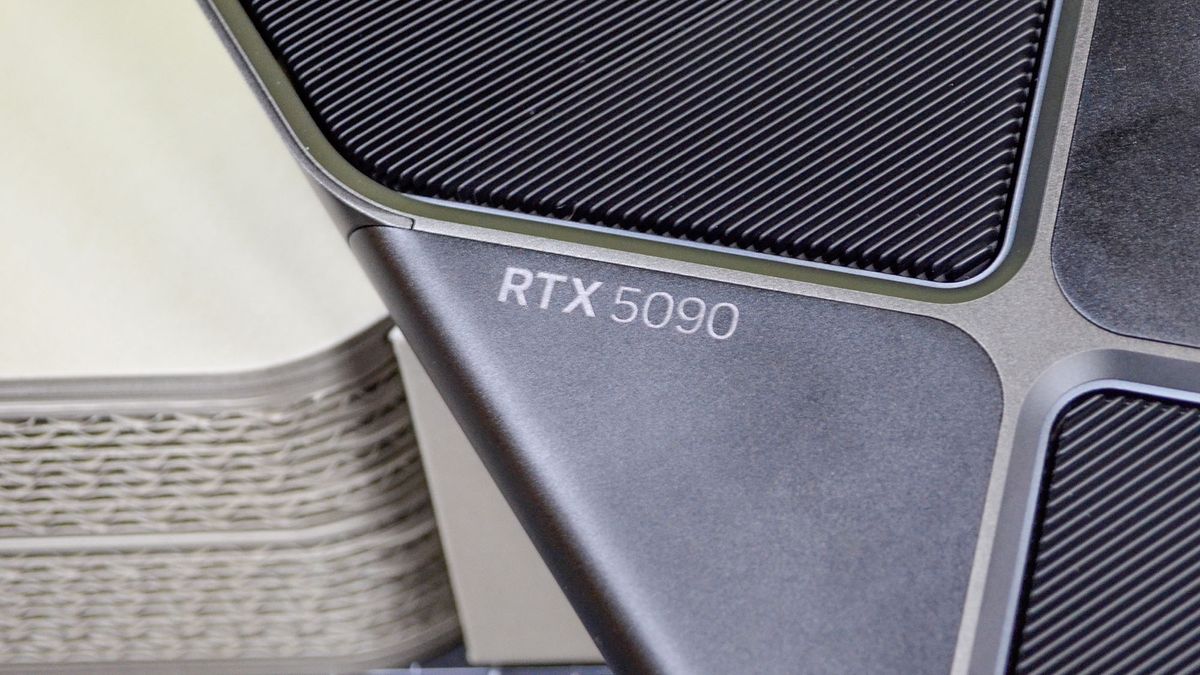Nvidia’s RTX 5000 GPUs: Affordable Powerhouse or Overpriced Luxury?

Nvidia’s RTX 50 Series: A Game-Changer in the World of Graphics Cards?
As someone who’s been following the graphics card market closely, I’ll admit that my main gripe about Nvidia’s RTX 4000 series isn’t the massive wattage (although that’s a legitimate concern) – but rather the pricing. For the past few generations, Nvidia has been hiking up the cost of its top-of-the-line graphics cards, and even its mid-range offerings haven’t been spared. It’s gotten particularly noticeable with the dearth of budget-minded options to offset this trend.
When rumors about the RTX 50 series started surfacing, buyers understandably worried that prices would soar even higher, with little to show for it in terms of performance. But with the full reveal at CES 2025, we now know that the MSRP is shockingly affordable.
The flagship Nvidia GeForce RTX 5090, thought to be a Titan due to its incredible specs, is priced at $1,999 / £1,999 / AU$4,039 – still steep, but not drastically different from the original $1,599 tag for the RTX 4090. This is particularly promising, given the rumors pointed to a price nearly double what it ended up being.
Of course, there’s the more budget-friendly RTX 5080, priced at $999 / £939 / AU$2,019, and the RTX 5070 and 5070 Ti at $549 / £549 / AU$1,509, and $749 / £749 / AU$1,109, respectively. The 5080 is a $200 dent from the RTX 4080’s launch price, and we can only hope for a similar performance boost.
Most impressively, Nvidia claims that the RTX 5070 will offer performance on par with the RTX 4090’s native performance, thanks to DLSS 4, but at around a third of the initial MSRP – a full generation drop in price. The RTX 5070 Ti will even outperform it by a hair, for just $150 more.
This is particularly heartening, given the snail’s pace of price drops in the graphics card market. I’ve long posited that graphics cards need to be made more affordable, with Intel’s Arc Battlemage series a promising step in that direction. Now, it looks like Nvidia is finally listening, capping overall price boosts while making its mid-range options more accessible.
Unfortunately, this is in stark contrast to AMD’s recent approach. AMD has long been the more affordable option, balancing solid performance with competitive pricing. However, recent reports suggest that the upcoming RDNA 4 cards may miss the mark on pricing.
The RX 9070 XT and RX 9070 don’t have official prices (apparently, they’ll be "competitive" with Nvidia), and their launch is still set for at least March 2025. This puts Team Red at a disadvantage, as Team Green’s RTX 5070 Ti and 5070 will hit the market in February 2025 with a healthy MSRP. By the time AMD releases their GPUs, everyone might have already shelled out for new Nvidia cards or opted for the premium Nvidia offerings if AMD’s prices are too close to their competitors.
Worse still, reports indicate that the RX 7400 and 7300, which would have been new, aggressively budget-friendly RDNA 3 options, have been axed in favor of fully supporting RDNA 4. If true, Team Red is giving away a major market advantage.
As it stands, we’re looking at a potentially momentous shift in the graphics card landscape. Nvidia has at least addressed price inflation, while AMD seems lost on the GPU front. It’s a shame, really, as it would be more beneficial for consumers to have two titans on an even playing field, keeping prices in check.






